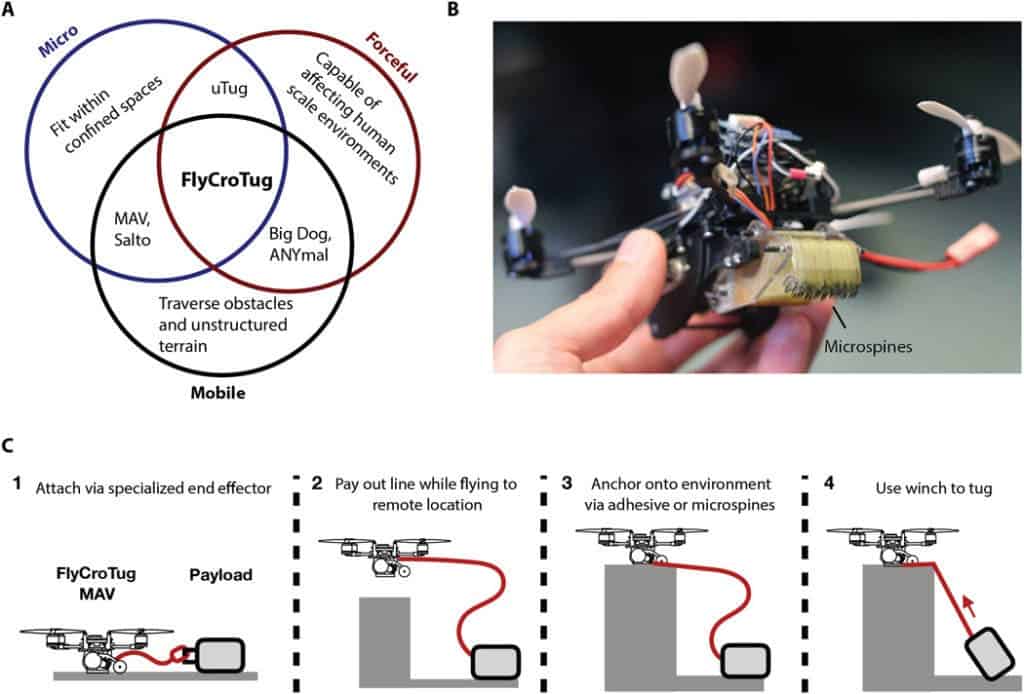Inspired by the natural world, researchers have designed a microdrone that can pull objects up to 40 times its weight. By anchoring itself to various surfaces using adhesive action inspired by geckos and wasps, the tiny aerial vehicle is able to lift cameras, water bottles, and even pull door handles, while the drone itself is as light as a bar of soap.

The FlyCroTugs drone was developed by Stanford’s Mark Cutkosky and Dario Floreano at the École Polytechnique Fédérale de Lausanne in Switzerland. Other similar drones demonstrated previously could only lift twice their own weight using aerodynamic forces alone. To drastically improve their tiny aerial vehicle’s towing power, the researchers turned to one of the most feared predators in the insect world: the wasp.
When a wasp captures prey too big to transport by flight, it chooses to drag it using different attachment options. Researchers studied the various ways wasps choose to transport prey and computed the ratio of flight-related muscle to total mass that determines whether the predator flies or drags its prey.
“When you’re a small robot, the world is full of large obstacles,” said Matthew Estrada, a graduate student at Stanford and lead author of the new study published in Science Robotics. “Combining the aerodynamic forces of our aerial vehicle along with interaction forces that we generate with the attachment mechanisms resulted in something that was very mobile, very forceful and micro as well.”
When encountering a smooth surface, FlyCroTugs uses gecko-like grippers that create non-sticking intermolecular forces between the adhesive and surface. For rough surfaces, the tiny flying robot sticks its 32 microspines into the small pits of a surface, latching onto it.
Fitting all this hardware inside a robot with only twice the weight of a golf ball was no easy feat, but the team was up to the challenge. What they wound up with was a fast, small, and maneuverable flying robot capable of moving very large loads up to 40 times its own weight.
“People tend to think of drones as machines that fly and observe the world, but flying insects do many other things – such as walking, climbing, grasping, building – and social insects can even cooperate to multiply forces,” said Floreano in a statement. “With this work, we show that small drones capable of anchoring to the environment and collaborating with fellow drones can perform tasks typically assigned to humanoid robots or much larger machines.”
FlyCroTugs represents a paradigm shift away from drones occupying a single niche. Not only does it show that drones are excellent for navigating remote locations, but they can also be used to interact with the physical world. In tests, FlyCroTugs flew atop a crumbling structure from where it hauled up a camera and even opened a door with the help of another drone (see the video).
In the future, the team hopes to develop an autonomous system that enables them to maneuver and coordinate multiple FlyCroTugs at once.
“The tools to create vehicles like this are becoming more accessible,” said Estrada. “I’m excited at the prospect of increasingly incorporating these attachment mechanisms into the designer’s tool belt, enabling robots to take advantage of interaction forces with their environment and put these to useful ends.”


